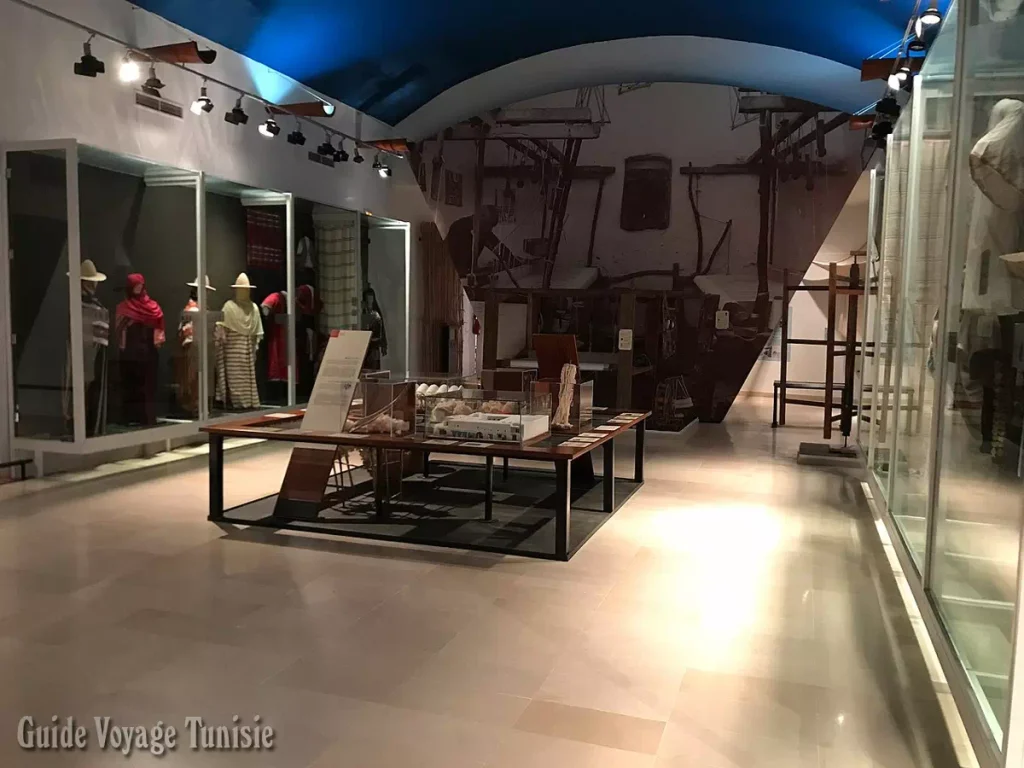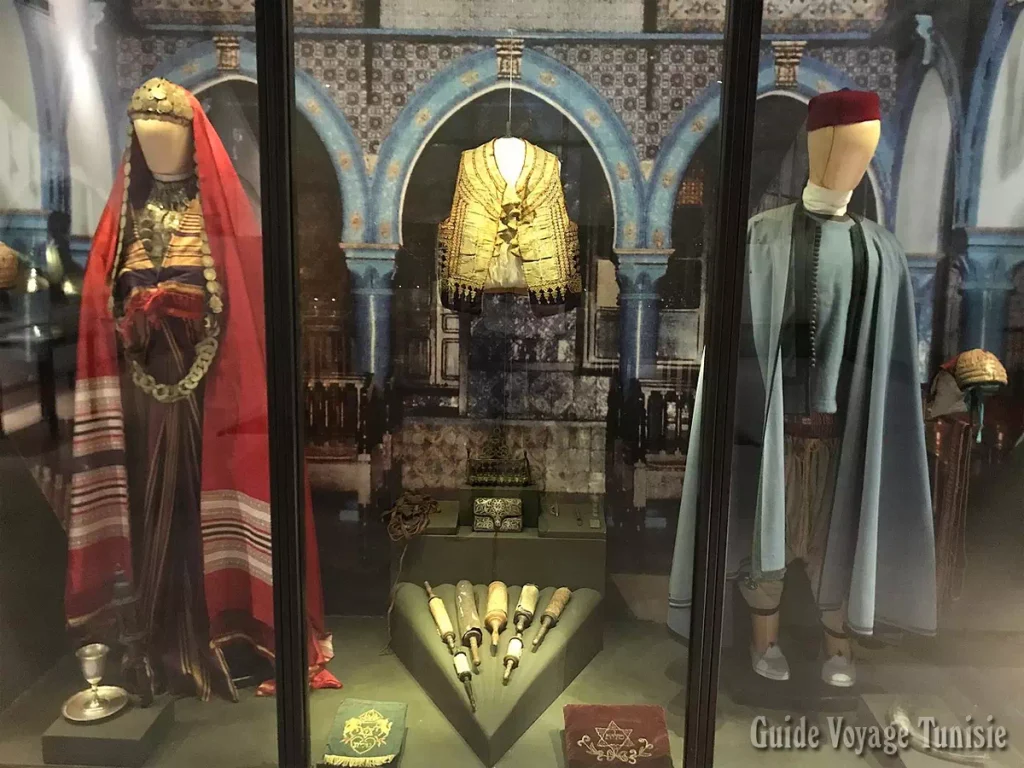The museum of popular arts and traditions of Djerba
The Museum of Popular Arts and Traditions in Djerba portrays the essence of island traditions and the distinct characteristics of the Jerbian people, the age-old inhabitants of the mythical and legendary island known as the “Island of the Lotophages.”
This museum brings together traditional objects organized by themes. Additionally, it showcases models, life-sized scenes, and posters, enabling Jerbians to relive their daily experiences, from arduous labor to festive occasions, all while embracing the passion and enchantment of artisanal mastery.
The Museum of Popular Arts and Traditions in Houmt Souk is well worth a visit, not only for its collections of costumes, jewelry, and pottery, but also for the captivating setting that houses them.
Rediscovering Artisanal Heritage
Located on the outskirts of the town, en route to the beach, this museum occupies a former zaouïa. Once a place of worship, this monumental complex built around a tomb now offers an immersive experience in manual arts. It unveils the rich artisanal history of Djerba, including a collection of traditional costumes, Quranic texts, emblematic jewelry showcasing local craftsmanship, various terracotta and carved wooden objects, as well as a captivating carpet exhibition.
Extended Legacy
Originally, the museum was established within the Sidi Zitouni zaouïa. Dating back to the 12th century, this mausoleum was expanded in the 18th century by the governor of Djerba, Hmida Ben Ayed, to honor the wise Sidi Zitouni and Sidi Ameur, proponents of the Maliki rite and Sunni theology.
Thematic Exploration
The museum houses local craft objects and models to illustrate different aspects of life in Djerba. Its visit offers a structured museographic journey through several thematic rooms: agriculture, fishing, pottery, weaving, goldsmithing, and even a room dedicated to marriage, showcasing the rites and traditions of the island’s inhabitants.
Preserving Heritage
Through cloisonné and glass-inlaid jewelry, perforated pottery lamps, looms, chests, traditional costumes, Quran copies, and kitchen utensils, the museum unveils the island’s folkloric treasures, reflecting its economy and traditions.
Museum Evolution
Inaugurated in the 1970s, the Museum of Popular Arts and Traditions of Djerba found its home within the mausoleum’s premises. After its expansion and refurbishment in the 2000s, it was officially opened under its current name on December 17, 2008, with the mausoleum now being just a part of a larger complex.
Artisans in Action
The museum also offers reenacted workshops for potters and weavers, where visitors can witness artisans at work.
Practical Information
Covering a total area of 5100 m2, the museum includes:
A permanent exhibition spanning 720 m2.
A temporary exhibition hall of 127 m2.
A conference room.
An interactive space.
An interpretation center set up in the Sidi Zitouni zaouïa.
Visiting Hours
Winter: 09:00 AM – 04:30 PM
Summer: 09:00 AM – 07:00 PM
Ramadan Month: 09:00 AM – 05:00 PM
The museum of arts and traditions in pictures

